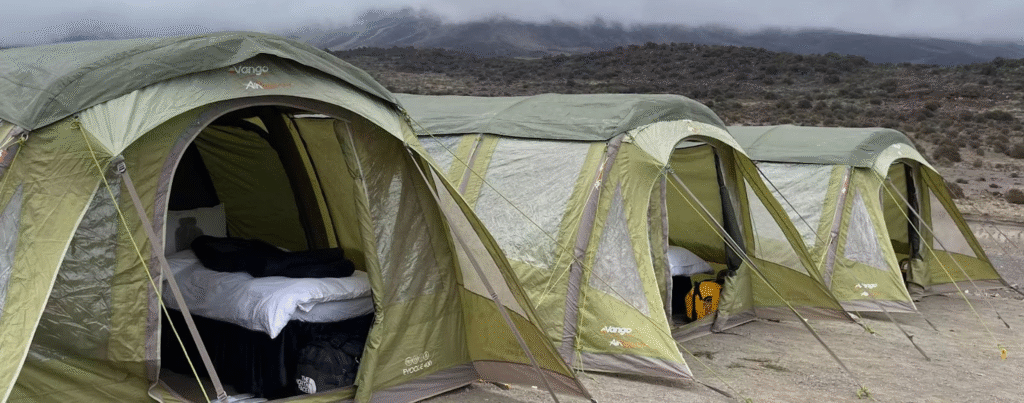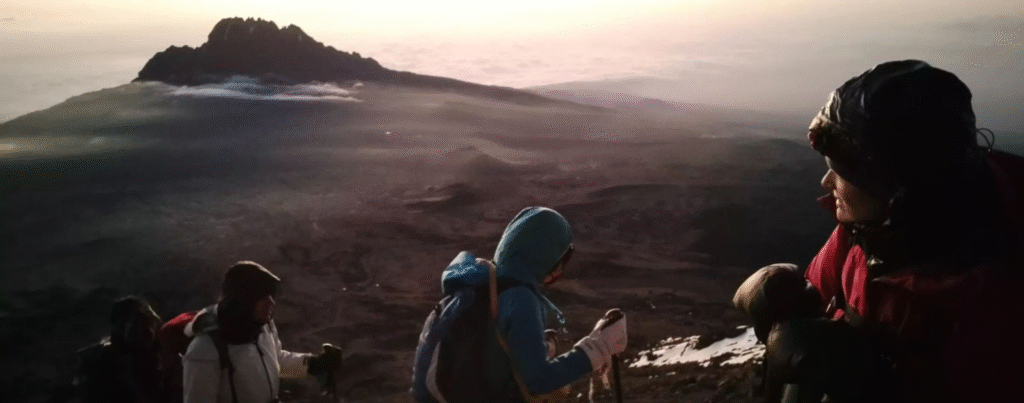In an age where adventure often means a long weekend and a few Instagram posts, climbing Mount Kilimanjaro stands apart. It’s a true test of endurance and determination — a mountain that ordinary people can climb, yet one that demands extraordinary spirit.
Rising 5,895 metres above Tanzania’s northern plains, Kilimanjaro is Africa’s highest peak and one of the world’s most iconic natural landmarks. Unlike the Himalayas or Andes, it doesn’t require technical skill or mountaineering gear. Anyone with fitness, patience, and commitment can climb Kilimanjaro successfully — and that’s precisely what makes it so special.
How Long Does It Take?
The first practical question every climber asks is how long does it take to climb Kilimanjaro?
Although some budget itineraries attempt to rush the climb in five or six days, the best success rates come with seven to nine. Those extra days allow for gradual acclimatisation — the body’s way of adjusting to thinner air — and make the difference between exhaustion and elation.
Altitude sickness remains the main obstacle for unprepared trekkers. The golden rule is “climb high, sleep low,” allowing the body to adapt naturally. A slower ascent gives you time to adjust, to notice how the landscape changes, and to appreciate what makes this mountain one of the most diverse environments on earth.
The Choice of Route
Kilimanjaro offers several established routes, each with its own atmosphere and rhythm. The popular Machame and Umbwe routes are scenic but busy, and include a frustrating 401-metre climb that’s immediately lost into Karanga Valley — a needless waste of energy.
Team Kilimanjaro’s TK Lemosho Route, however, takes a smarter approach. It begins on the western flank of the mountain, moving through lush rainforest and high moorland before joining the upper slopes near the Northern Circuit. This design avoids the crowds and optimises acclimatisation.
For the truly adventurous, there’s also an Excel Extension: a night spent inside the crater at 5,729 metres, after summiting. Few ever experience the eerie stillness of the crater floor at dawn, with steam rising faintly from the earth and the stars fading into sunrise.
When to Go
Timing is everything on Kilimanjaro. The best time to climb Kilimanjaro is during the dry months — January to March and June to October. During these seasons, the trails are more stable, the skies clearer, and summit conditions ideal.
For those seeking solitude or a deeper challenge, the rainy periods — April to May and November — can be equally rewarding. The paths are quieter, and the misty air adds a sense of mystery to the forest sections. But these months also bring slippery trails and heavier rain, requiring patience and good preparation.
Support That Makes the Difference
Unlike most treks, you can’t simply walk up Kilimanjaro alone. Tanzanian National Park rules require that all climbers be accompanied by licensed guides and porters. This is both for safety and sustainability: the crews manage camp logistics, cook meals, and monitor climbers for signs of altitude sickness.

Team Kilimanjaro, one of the most established and respected outfitters on the mountain, offers seven “support series” to suit different styles and budgets. Around 70 percent of climbers choose the Advantage Series, which combines comfort and authenticity — fresh food, private toilets, three-course meals, and a spacious mess tent for evening relaxation.
For those seeking simplicity, the Superlite Series lets trekkers carry their own gear — the purest form of the climb. At the other end of the scale, the Hemingway Series caters to VIPs, with private service, extra comforts, and a discreet touch of luxury even at altitude.
What It Feels Like to Climb
Every day on the mountain is different. The lower slopes are tropical and alive with colobus monkeys and birdsong. Above 3,000 metres, the forest fades into open moorland, where giant senecios and lobelias stand like alien sculptures. By 4,500 metres, the air is thin, the colours muted, and the horizon immense.
Summit night — the final push — begins around midnight. Climbers move slowly, guided by moonlight and headlamps, the air freezing, the world reduced to breath and motion. It is often the hardest few hours of their lives.

But when dawn breaks, everything changes. The glaciers glimmer in pink light, the sun spills over the endless plains below, and the sign at Uhuru Peak announces success. Exhaustion turns to joy. Tears, laughter, and stunned silence mingle in the thin air.
For many, the emotion is overwhelming — not because of the view, but because of what it represents: perseverance, unity, and proof that ordinary people can achieve extraordinary things.
After the Summit
Most climbers descend the same day and spend a final night on the lower slopes before returning to civilisation. Many then continue their Tanzanian adventure — a safari in the Serengeti or Ngorongoro Crater, or perhaps a few days of salt air and rest on Zanzibar’s beaches.
But even after returning home, the experience lingers. Kilimanjaro teaches patience, discipline, and perspective. It reminds climbers that achievement isn’t about competition — it’s about commitment.
Why It Still Matters
In an era obsessed with convenience, Kilimanjaro endures as a timeless challenge. It cannot be hurried, hacked, or simplified. It requires respect — for nature, for one’s body, and for the people who make the journey possible.
To Kilimanjaro veterans, the mountain is a teacher. It strips away ego and noise, replacing them with humility and awe. And for newcomers, it’s proof that there are still places in the world where effort, courage, and wonder meet.
The Final Word
Whether you’re an athlete seeking your next goal, a family planning a shared adventure, or a professional craving distance from the screen, Kilimanjaro offers something unique: the rare opportunity to do something both primal and pure.
By choosing your timing wisely, understanding how long does it take to climb Kilimanjaro, and selecting routes like TK Lemosho that are designed for success, you don’t just climb a mountain — you rediscover what it means to move with purpose.
Kilimanjaro isn’t about standing on top of Africa. It’s about the quiet triumph of proving to yourself that you can.
Keep an eye for more latest news & updates on Daily!



